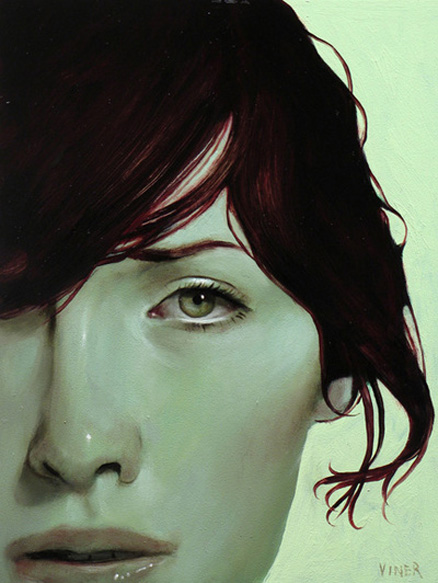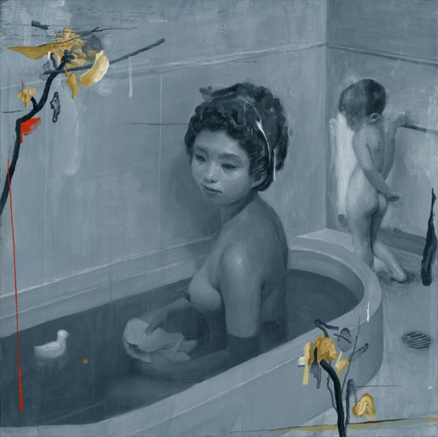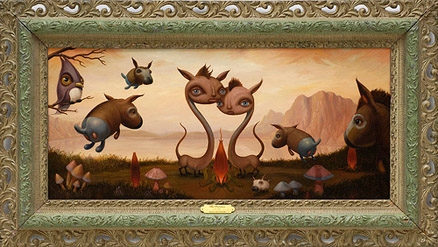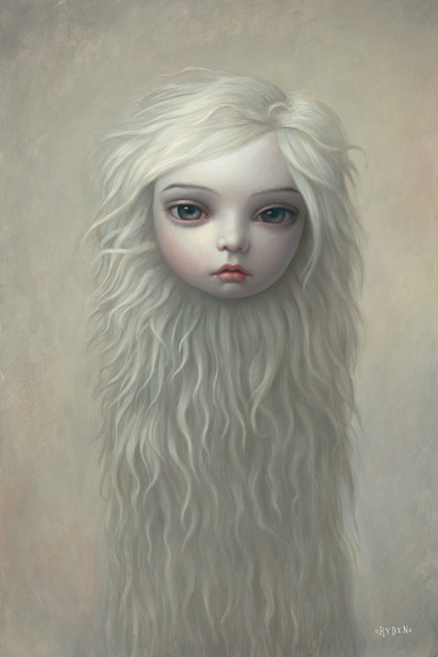9
- 28th of Jun. 2010 -
Its an old argument that has been getting some back wind recently. Is illustration a form of graphic design or is it art? Illustrators have been coming out of its design / publisher / book niche over the last few years and coming in to the world of art galleries, claiming their space within the art world.
Living with a web designer for a husband, our visual library, just like our discussions about art and design, is a mix of Computer Arts and Art in America magazines, every discounted art or design Taschen book we can lay our hands on, visual dictionaries, art history textbooks and old auction house catalogues. A key player that is enjoyed by both of us is Hi Fructose magazine - a west coast publication that until recently was subtitled Under the Counter Culture and now dubs itself as a New Contemporary Art magazine.
True to its namesake, the publication presents the overly sweet, the saccharin, the borderline kitsch. The works presented are usually highly graphic, sometime computer generated art - what was considered a subculture of the art world until not long ago is now a bona-fide part of it. As far away from what is considered the contemporary art world as these works are, they are completely legitimate and there are a number of galleries, mostly on the west coast, that deal only with this style. The big eyed creatures of Scott Musgrove and Mark Rayden, the Story teller pieces of Jonathan Wiener (Viner) and the dream / nightmare work of James Jean are highly recognized and respected works of art, leading the way to many more illustrators who are starting to make their mark.

Jonathan Viner, Trance. Painterly and literal.
If I were asked to describe the kind of art this magazine presents with two words, I would describe it as Literal art. Every piece has a story behind it and it is brought through with great detail. The visuals of these pieces often remind me of Takashi Murakamis Super Flat Manifesto, where he went to great length explaining the theory behind flat Japanese art. The flatness, he says, helps the artist tell a story, it keeps things simple and allows the eye to wonder through the different levels without distractions. This is where these pieces, tacky as they are at points, achieve their legitimacy as works of art.

James Jean, Sink 2. Subdued base for multi-layered piece.
Always a tad deformed, the animals and humans that rule this style (apart from a few, most artists that fit this category deal with figure and landscape, not shape or line) have long, swan-like necks, extended limbs and eyes are always accentuate by size or by being taken off completely. Hardly any of it is realistic in any way; it is dark, even to the point of being scary, giving access to the deepest corridors of their creators imaginative minds. If there is emotion, it comes out through the figures expressions, hand gestures, body language and surroundings, not through brushwork or medium. These works are usually clean and though they are painted on canvas in traditional methods, they have a highly graphical feel to them. If I expand their definition now, Id have to say that they are literal in theme, combining Medieval and Pop Art aesthetics.
I know, it seems a tad far-fetched to discuss this type of art in the context of such historical artistic step-stones, but take a longer, deeper look into these pieces. They are as symbolic-over-accurate and contain the same story telling quality medieval book illustrations and church pieces had, they are as graphic and culture driven as Pop Art was. These works are far beyond book and magazine illustrations, they go beyond the commercial and the album cover, they are Art in every sense of the word.

Scott Musgrove, The Observers. Fantasy world gone pop.
Some would say that they are highly commercial works, appealing to a large common denominator, copied repeatedly and reproduced in mass quantities. Warhols works were treated in the same form. Much like these artists, Warhol was also first successful in Los Angeles, not in New York, where he was accused of exactly these crimes against the work of art.
James Jeans Process Recess sketchbooks, which are practically copies of his Moleskins, are amazingly inspirational art books (I happen to own one), showing his mastership over form and body, giving the perfect background to his bigger works. Yes, he also paints on his friend’s food-trucks, blogs and promotes himself on Twitter - all the more fun for those who enjoy his work. Who said art should forever be serious and conventional? it is the sense of humor and unconventionality that brought us the greatest artist of the modern and contemporary art world, including several that Ive written about in previous posts.

Mark Ryden, Fur Girl. A little sweet, a little dark.
Art might be many things, but above all, it is a form of expression. In my opinion, any form of expression that is created with knowledge, emotion, thought and history in mind, can be defined as art. I dont feel that illustration needs to be separated unless it desires to be, when found in more commercial forms of publications. The aesthetics of most of these works is very high, they are considering everything from medium to canvas size, and pieces are created carefully to reach the highest level of quality. Leave conventions and pre-conceptions behind, take a good, long look and tell me - is it not art?
So what do you think? The world wants to know!